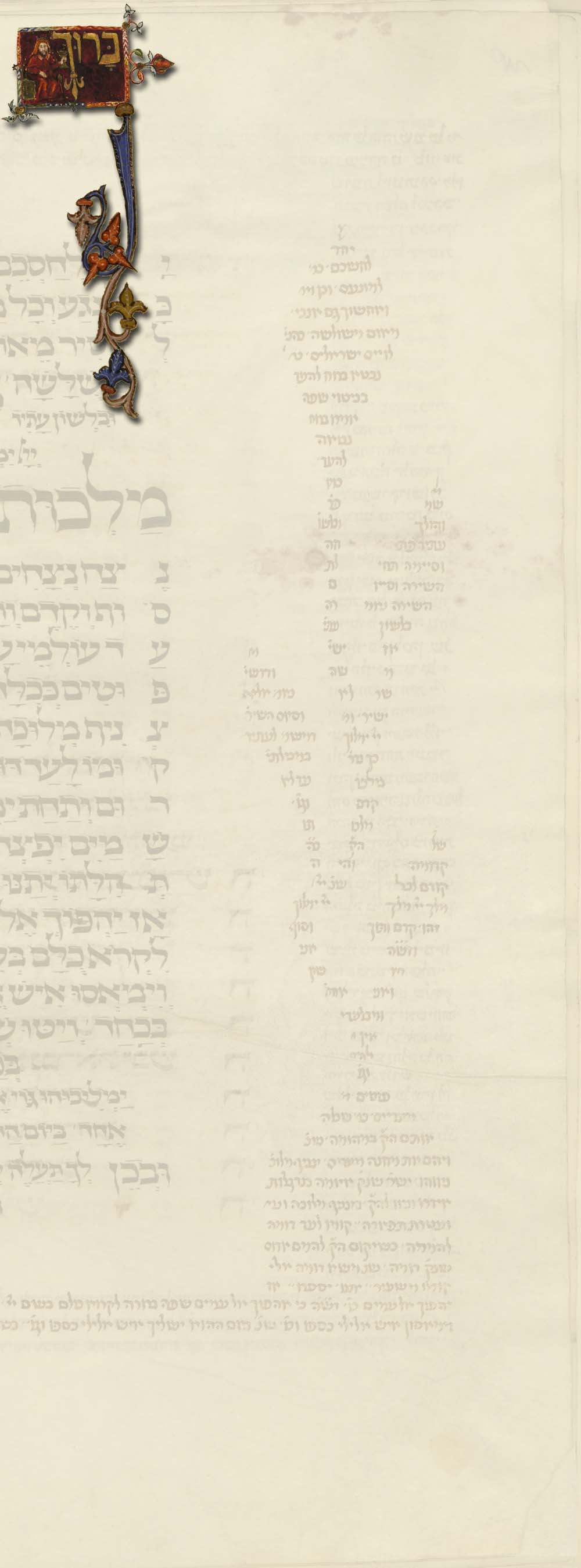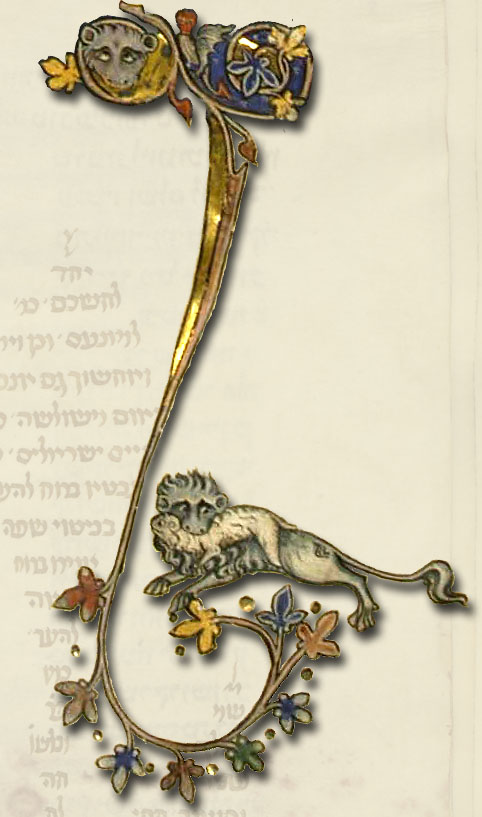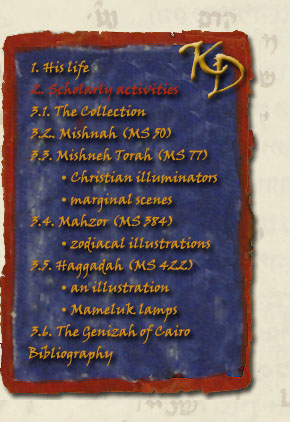



2. His scholarly activities
![]()
 The – incomplete – bibliography of
Kaufmann’s works consists of 546 items, the first of which is dated 1872. 37
His most important articles were republished in three volumes after his death. 38
He wrote about twelve great works published separately. His activities were most
widely ramified, covering many areas not necessarily connected to each other. At
the centre of his interests stood the philosophy of Jewish religion, and it was
this subject to which he devoted his first magnum opus, in which he subjected to
overall examination the views of a philosopher of religion who had lived in
11th-12th century Spain: Die Theologie des Bachja Ibn Pakuda. Vienna
1874. 102 pp. (reprinted in Gesammelte Schriften II. 1910. 1-98). In a
work of minor
The – incomplete – bibliography of
Kaufmann’s works consists of 546 items, the first of which is dated 1872. 37
His most important articles were republished in three volumes after his death. 38
He wrote about twelve great works published separately. His activities were most
widely ramified, covering many areas not necessarily connected to each other. At
the centre of his interests stood the philosophy of Jewish religion, and it was
this subject to which he devoted his first magnum opus, in which he subjected to
overall examination the views of a philosopher of religion who had lived in
11th-12th century Spain: Die Theologie des Bachja Ibn Pakuda. Vienna
1874. 102 pp. (reprinted in Gesammelte Schriften II. 1910. 1-98). In a
work of minor
 dimensions he discussed the art of Judah Halevi, a poet and
philosopher of religion of the same period: Jehuda Halewi. Versuch einer
Charakteristik. Breslau 1877. 48 p. (reprinted in Gesammelte Schriften
II. 1910. 99-151.) He was honoured to receive a letter from Empress
dimensions he discussed the art of Judah Halevi, a poet and
philosopher of religion of the same period: Jehuda Halewi. Versuch einer
Charakteristik. Breslau 1877. 48 p. (reprinted in Gesammelte Schriften
II. 1910. 99-151.) He was honoured to receive a letter from Empress
 Elisabeth, the wife of Emperor Franz Joseph I, asking for a copy of this work,
because this prince of mediaeval poets had also inspired her favourite poet,
Heinrich Heine, and upon her
inquiries she had been advised to turn to
Kaufmann's work as the most reliable reference. 39
It was these early years that saw the completion of his seminal monograph in the
field of the philosophy of the religion of Judaism and Islam, a chapter of which
he submitted to the University of Leipzig as a Ph.D. thesis. As far as its title
goes, this work, which has retained its importance up to the present, discusses
the history of God's attributes in mediaeval Jewish theology. However, since the
theologians in question lived in the Arab-Islamic world and their
Elisabeth, the wife of Emperor Franz Joseph I, asking for a copy of this work,
because this prince of mediaeval poets had also inspired her favourite poet,
Heinrich Heine, and upon her
inquiries she had been advised to turn to
Kaufmann's work as the most reliable reference. 39
It was these early years that saw the completion of his seminal monograph in the
field of the philosophy of the religion of Judaism and Islam, a chapter of which
he submitted to the University of Leipzig as a Ph.D. thesis. As far as its title
goes, this work, which has retained its importance up to the present, discusses
the history of God's attributes in mediaeval Jewish theology. However, since the
theologians in question lived in the Arab-Islamic world and their
 teachings
developed in continuous interaction with the religious philosophy of this world,
within its conceptual system, as its integral part, this subject could only be
treated within the framework of the philosophy of the religion of Islam. Thus
despite its modest title, this work is no less than a complete history of the
religious philosophy of the age in question: Geschichte der Attributenlehre
in der jüdischen Religions-Philosophie des Mittelalters von Saadia bis Maimuni.
Gotha 1877. 527 pp. One segment of the influence exerted by the religious
philosophy of Islam upon Judaism is treated exhaustively in his monograph
published three years later: Die Spuren al-Batlajűsi's in der jüdischen
Religions-Philosophie nebst einer Ausgabe der hebräischen Übersetzungen seiner
Bildlichen Kreise. In: Jahresbericht der Landes-Rabbinerschule in Budapest
für das Schuljahr 1879-80. Budapest 1880. 64+55 pp. 40
Soon he published his seminal work on the senses, in which his comprehensive
erudition in philology, philosophy and the natural sciences 41
alike comes to light: Die Sinne. Beiträge zur Geschichte der Physiologie und
Psychologie im Mittelalter aus hebräischen und arabischen Quellen. In:
Jahresbericht der Landes-Rabbinerschule
in Budapest für das Schuljahr 1883-84. Budapest 1884. V, 199 pp. 42
(It was also published separately with a Leipzig imprint.) This work was also
highly appreciated by the eminent German scholar of medicine, Rudolf
Virchow. 43
Towards the end of his tragically short life
Kaufmann published a work in which
he analyzed the system of Ibn Gabirol, the
remarkable Neoplatonic philosopher and poet in 11th century Spain: Studien
über Salomo Ibn Gabirol. In: Jahresbericht der Landes-Rabbinerschule in
Budapest für das Schuljahr 1898/99. Budapest 1899. 123 pp. 44
teachings
developed in continuous interaction with the religious philosophy of this world,
within its conceptual system, as its integral part, this subject could only be
treated within the framework of the philosophy of the religion of Islam. Thus
despite its modest title, this work is no less than a complete history of the
religious philosophy of the age in question: Geschichte der Attributenlehre
in der jüdischen Religions-Philosophie des Mittelalters von Saadia bis Maimuni.
Gotha 1877. 527 pp. One segment of the influence exerted by the religious
philosophy of Islam upon Judaism is treated exhaustively in his monograph
published three years later: Die Spuren al-Batlajűsi's in der jüdischen
Religions-Philosophie nebst einer Ausgabe der hebräischen Übersetzungen seiner
Bildlichen Kreise. In: Jahresbericht der Landes-Rabbinerschule in Budapest
für das Schuljahr 1879-80. Budapest 1880. 64+55 pp. 40
Soon he published his seminal work on the senses, in which his comprehensive
erudition in philology, philosophy and the natural sciences 41
alike comes to light: Die Sinne. Beiträge zur Geschichte der Physiologie und
Psychologie im Mittelalter aus hebräischen und arabischen Quellen. In:
Jahresbericht der Landes-Rabbinerschule
in Budapest für das Schuljahr 1883-84. Budapest 1884. V, 199 pp. 42
(It was also published separately with a Leipzig imprint.) This work was also
highly appreciated by the eminent German scholar of medicine, Rudolf
Virchow. 43
Towards the end of his tragically short life
Kaufmann published a work in which
he analyzed the system of Ibn Gabirol, the
remarkable Neoplatonic philosopher and poet in 11th century Spain: Studien
über Salomo Ibn Gabirol. In: Jahresbericht der Landes-Rabbinerschule in
Budapest für das Schuljahr 1898/99. Budapest 1899. 123 pp. 44
It is also to him that we owe important works based on a profound and at the time unrivalled study of sources in the field of Jewish genealogy: Samson Wertheimer, der Oberhoffactor und Landesrabbiner 1658-1724 und seine Kinder. (Zur Geschichte jüdischer Familien I.) Vienna 1888. 114 pp.; Urkundliches aus dem Leben Samson Wertheimers. In: Jahresbericht der Landes-Rabbinerschule in Budapest für das Schuljahr 1890-91. Budapest 1891. 142 pp.; 45 Die Familien Prags nach den Epitaphien des alten jüdischen Friedhofs in Prag, zusammengestellt von Simon Hock. Aus dessen Nachlasse herausgegeben, mit Anmerkungen versehen und biographisch eingeleitet von Prof. Dr. David Kaufmann. Pressburg 1892. 402+36 pp.; R. Jaїr Chajjim Bacharach (1638-1702) und seine Ahnen. (Zur Geschichte jüdischer Familien II.) Trier 1894. 140 pp.; Aus Heinrich Heine's Ahnensaal. Breslau 1896. 312 p.
He also wrote about the history of his wife’s family – the work interrupted by his untimely death was given the finishing touches by the hand of his close friend Max Freudenthal: Die Familie Gomperz. (Zur Geschichte jüdischer Familien III.) Frankfurt am Main 1907. XVII, 437 pp. Kaufmann published the memoirs of a highly-educated Jewish widow living in Germany in the second half of the 17th and the first half of the 18th century, which is remarkable both as an important source of cultural history and as a touching human document. This work has an additional point of interest in so far as it was written by a woman, quite an unusual phenomenon for its time: Die Memoiren der Glückel von Hameln 1645-1719. Frankfurt 1896. LXXII+400 pp. It was such a success that it was translated into German, English, French and Modern Yiddish. 46 The classification of the language of this work written in Hebrew characters and set in a Jewish environment is disputed in scholarly literature. It is only slightly different from the standard German of its time and some scholars term it “Modern Western Yiddish” while others deny the existence of such a language altogether applying the word “Yiddish”, a technical term only imported to Europe from the United States around 1910, to designate the “Jewish German” used only in Eastern Europe, and maintaining that the language of the work in question is in fact the colloquial German of the day, with a touch of Jewish colouring at the most. 47
We are indebted to David Kaufmann for the publication of a number of important original documents which he found on his numerous and frequent visits to archives and libraries in various European countries, but it is well known that a considerable part of the incredible wealth of primary data contained in his publications was received from his well-organized network of “agents”, who collected data for him from libraries, manuscript collections and archives all over Europe and in certain areas of the Middle East. This they did partly for friendship's sake, but if it seemed appropriate Kaufmann also knew how to find the right moment and method of material remuneration. It was likewise through his connections and his “agents” 48 that he managed to build up his exquisite collection of manuscripts and books with the material background of the family of his wife – the important documents published by him came quite often from his own collection. He possessed an exceptionally vast and profound knowledge of bibliographical data, a fact copiously attested to by important publications. His works dealing with the affairs of certain communities, with Jewish archaeology and local history, in which he used the numerous copies he made of tomb inscriptions, are of lasting value. It was perhaps Jewish history that occupied the centre of his interest, and his works in this field surpass considerably those of his contemporaries, thanks to his rich perusal of unknown primary sources. From among his works relating to Hungarian history, mention should be made of the editing and translation of an important source relating to the recapture of Buda from the Turks in 1686 – he published this work from a manuscript in his own possession: 49 Die Erstürmung Ofens und ihre Vorgeschichte nach dem Berichte Isak Schulhofs (1650-1732) (Megillath Ofen). Trier 1895 62 + 32 pp. 50 – and of the treatment of an interesting episode from the past of the small Moravian city of Ungarisch Brod 51 close to the Hungarian border in those times: Die Verheerung von Ungarisch-Brod durch den Kuruzzenüberfall vom 14. Juli 1683. In: Monatsschrift für Geschichte und Wissenschaft des Judentums XXXVII (1893) 270-282, 319-331. 52
His researches and achievements in the field of the history of Jewish art, especially in the history of manuscript illustration, are of epoch-making significance: Zur Geschichte der jüdischen Handschriftenillustration. In: David Heinrich Müller – Julius von Schlosser: Die Haggadah von Sarajevo. Eine spanisch-jüdische Bilderhandschrift des Mittelalters. Vienna 1898. 255-311 [Anhang] (reprinted in Gesammelte Schriften III. 1915. 173-228); Les cycles d'images du type allemand dans l'illustration ancienne de la Haggada. Revue des Études Juives XXXVIII (1899) 74-102 (republished in German translation – perhaps original – as Die Bilderzyklen im deutschen Typus der alten Haggada-Illustration. In: Gesammelte Schriften III. 1915. 229-261). Traditional public opinion was that Jews always abhorred figural representation in any form because their religion forbade it. 53 Kaufmann was perhaps the first scholar of stature to draw attention to the erroneousness of this view, proving it untenable by marshalling a large and comprehensive corpus of data. Thus it is understandable that he is also regarded as the founder of the scholarly discipline of Jewish art history:
37 Dr. M[arcus] Brann: Verzeichniss der Schriften und Abhandlungen Davis Kaufmann's. In: Gedenkbuch. 1900. LVII–LXXXVII. This list is not reliable concerning items published in America. See also Brann's additions in: David Kaufmann: Gesammelte Schriften I-III. Herausgegeben von M[arcus] Brann. Frankfurt am Main 1908-1915. III. VII-IX.
 38
Kaufmann 1908-1915.
38
Kaufmann 1908-1915.
39 Heinrich
Heine, Romanzero. Drittes
Buch. Hebräische Melodien. Jehuda ben Halevy I-IV. Cf.
Goldberger 1900. 17.
Rosenthal 1900. XXVII1.
40 Also appeared in Hungarian:
Al-Batlajűsi nyomai a zsidó vallás-philosophiában és Jelképes köreinek
héber fordításai. In: A budapesti Országos Rabbiképző-Intézet
értesítője az 1879-1880-iki tanévről. Budapest 1880. 59+55 pp.
41
Krauss mentions that
Kaufmann made a lot
(eine Menge) of notes to Joseph
Hyrtl's Onomatologia
anatomica. Geschichte und Kritik der anatomischen Sprache der Gegenwart.
Vienna 1880, which the famous anatomist had sent to him. A dedicated
copy of this work is extant in the Kaufmann Collection, but there is no
trace of Kaufmann's familiar marginal notes in his characteristic
violet ink and the book itself is in an excellent condition so one can
assume that Kaufmann may
have possessed another copy of this work too.
Krauss 1901 (1902). 29. It
may have been sold by Schlesinger (see below) or destroyed together with
Kaufmann's letters and
notes during World War II.
42 It also appeared in Hungarian:
Az érzékek. Adalékok a középkor physiologiája- és psychologiájának
történetéhez, héber és arab forrásokból. In: A budapesti Országos
Rabbiképző-Intézet értesítője az 1883-84-iki tanévről. Budapest 1884. V,
186 p.
43
Goldberger 1900. 20.
44 It also appeared in Hungarian:
Tanulmányok Salamon Ibn Gabirolról. In: A budapesti Országos
Rabbiképző-Intézet értesítője az 1898/9 tanévről. Budapest 1899. 113 pp.
45 It also appeared in Hungarian:
Okmányok Wertheimer Sámson élettörténetéhez. In: A budapesti
Országos Rabbiképző-Intézet értesítője az 1890-91-iki tanévről. Budapest
1891. 139 p.
46 German translations by Bertha
Pappenheim (Vienna 1910) and Alfred Feilchenfeld (Berlin 1913), English
translations by Marwin Lowenthal (1932) and Beth-Zion Abrahams (New York
– London 1932), French translation by Léon Poliakov (Paris 1971) and
modern Yiddish translation by Yosef Bernfeld (Buenos Aires 1967). The
German and English translations appeared in numerous editions.
47 Oral communication by Ádám
Nádasdy. See also Bettina
Simon: Jiddische
Sprachgeschichte. Versuch einer neuen Grundlegung. Frankfurt am Main
1993. 7-65, 212-218.
48 Cf. e.g., Eugen
Mittwoch: Briefwechsel
zwischen David Kaufmann und Paul-Georg von Möllendorf. In:
Monatsschrift für Geschichte und Wissenschaft des Judentums 76 (1932)
401 quoted in Schmelzer’s contribution to this volume.
49 Its present shelf-mark is MS
Kaufmann A 349.
50 This work appeared in Hungarian
translation recently: Schulhof Izsák: Budai krónika. [=Buda chronicle].
Translated from Hebrew by László Jólesz. Budapest 1981. See also
Kaufmann Dávid: Budavár
visszavívásának egy szemtanuja és leírója. [=An eyewitness
and chronicler of the recapture of Buda Castle].
In: Az Izraelita Magyar Irodalmi Társaság Évkönyve [=Yearbook of the
Israelite Hungarian Literary Society] 1895. 63-92.
51 Present-day Uherský Brod in the
Czech Republic.
52 This work also appeared in the
1894 yearbook of the secondary school at Ungarisch Brod.
53 See e.g., Julius
von Schlosser: Der
Bilderschmuck der Haggadah. In: David Heinrich
Müller – Julius
von Schlosser: Die
Haggadah von Sarajevo. Eine spanisch-jüdische Bilderhandschrift des
Mittelalters. Vienna 1898. 240-241. On the untenableness of this
thesis for the Biblical and Hellenistic-Roman periods, see Joseph
Gutmann: The “Second
Commandment” and the image in Judaism. In: Hebrew Union College
Annual 32 (1961) 161-174. [=
Id.: Sacred images:
Studies in Jewish art from Antiquity to the Middle Ages. [Collected
studies series, CS 303]. Northampton 1989. II. 161-174].
Id.:
Recent literature on Jewish art: a critical appraisal. In: Jewish
Book Annual 25 (5728/1967-1968) 167-169. See also Gabrielle
Sed-Rajna’s contribution to
this volume.
54
Krauss 1901 (1902). 45.
55 Joseph
Gutmann: Jüdische Kunst.
In: Begegnungen mit dem Judentum. Ed. Bernhard Rübenach.
Stuttgart–Berlin 1981. 167, 170. [=
Gutmann 1989. I. 167, 170.]
Noch vor zehn Jahren wäre es absurd gewesen, von einer jüdischen Kunst zu sprechen. Diese Kunst entdeckt zu haben, ist Kaufmann's eigenstes Verdienst. Nicht nur mußte er beweisen, daß eine solche Kunst existire, er mußte auch beweisen, daß sie existiren könne, indem er die Meinung, als stehe das Bilderverbot der Kunstentfaltung im Judenthum im Wege, als irrig erwies, er es vielmehr als unwiderlegbare Thatsache hinstellte, daß die Kunst auf flachem Raume nie verboten war, insofern kein Götzendienst sich daran knüpfte. 54
It was David Kaufmann who first used the term “Jewish art” in an article published in 1878. 55
He also dealt with subjects relating
to the history of medicine: Isak Israelis Propädeutik für Ärzte. In:
Magazin für die Wissenschaft des Judentums XI (1884) 97-112 (reprinted in
Gesammelte Schriften III. 1915. 262-275); Die jüdischen Schüler des
Antonius Musa Brasavola in Ferrara. In: Monatsschrift für Geschichte und
Wissenschaft des Judentums XXXVIII (1894) 127-132 (reprinted in Gesammelte
Schriften III. 1915. 276-281).
